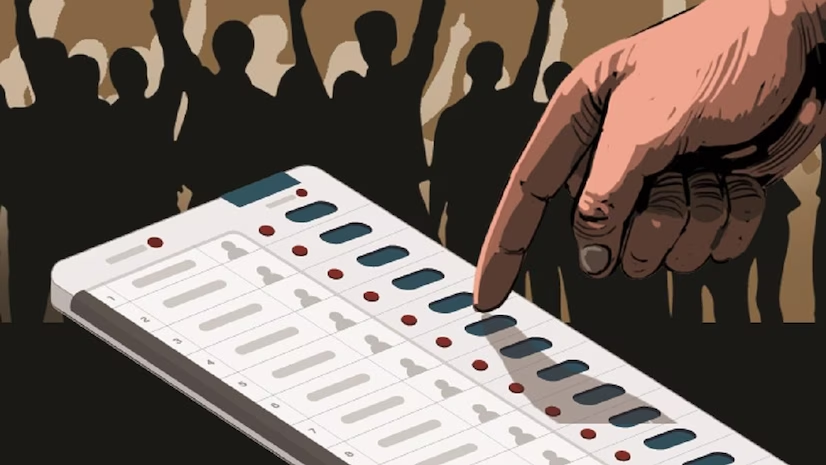The “One Nation, One Election” initiative aims to synchronize elections for both Lok Sabha and State Legislative Assemblies, seeking to streamline the electoral process, reduce costs and minimize governance disruptions. This concept was first practiced until 1967, is advocated for revival by Law Commission of India in its 170th report. However, the implementation of this proposal is complex, especially within framework of India’s federal structure and its diverse political landscapes.
Advantages of “One Nation, One Election”
1. Reduction in Electoral Costs
Conducting simultaneous elections could lead to substantial cost savings for exchequer. The estimated expenditure for the 2019 Lok Sabha elections was around ₹60,000 crores. By combining these with state elections, the overall expense could potentially be reduced by half, as separate preparations for multiple elections would no longer be necessary.
2. Continuity in Governance
The frequent imposition of Model Code of Conduct (MCC) during separate elections often halts ongoing developmental projects and policies. A synchronized election schedule could enable uninterrupted governance allowing governments at both state and national levels to focus on long-term policy planning without recurrent interruptions.
3. Reduced Burden on Security Forces
Multiple elections place a considerable strain on India’s security forces, which are often deployed for extended periods across various regions. A single election would alleviate this burden, especially in sensitive areas like Jammu and Kashmir or Naxal-affected regions, allowing for more efficient allocation and utilization of security personnel.
4. Potential for Higher Voter Turnout
A unified electoral process could increase voter participation. By reducing the frequency of elections, citizens might be more motivated to vote, considering they would only need to participate once for both state and national levels. For example, the turnout for 2024 Lok Sabha elections was 65.79%, lower than the 2019 turnout, partly due to voter fatigue from frequent elections.
5. Reduction in Political Polarization
Frequent elections often perpetuate a state of perpetual political campaigning, which can foster divisions and polarize society. Synchronizing elections could potentially provide longer periods focused on governance rather than continuous political rhetoric and campaigning, contributing to a more stable political environment.

Challenges of “One Nation, One Election”
1. Impact on Democratic Accountability and Federalism
Implementing the “One Nation, One Election” proposal could undermine India’s federal structure by limiting states’ autonomy to decide their electoral timing. It could also overshadow state-specific issues by conflating them with national concerns, thereby reducing the accountability of state governments. The principles laid down in S.R. Bommai vs. Union of India (1994) judgment underscore the importance of federalism as a core feature of India’s Constitution.
2. Constitutional Amendments Required
Significant constitutional amendments would be necessary to implement this proposal, particularly to Articles 83, 172, 85 and 174 which govern the duration of parliamentary and state assembly terms. These amendments must pass the “basic structure” test established by the Supreme Court in Kesavananda Bharati vs. State of Kerala (1973), ensuring they do not violate fundamental constitutional principles.
3. Logistical and Operational Challenges
Organizing simultaneous elections across India poses enormous logistical challenges. The 2024 general elections alone required over 1 million polling booths and 5.5 million electronic voting machines (EVMs). Combining these with state elections would significantly strain resources, necessitating extensive planning, coordination, and infrastructure upgrades.
4. Uncertainty in Case of Government Collapse
The proposal lacks clear mechanism for handling situations where a state government falls mid-term. For instance, the collapse of Maharashtra government in 2019 illustrates the complexities involved in maintaining synchronization without undermining democratic principles. The absence of provisions for such scenarios could lead to legal and constitutional ambiguities.
5. Diminished Role of Opposition Parties
Regular state elections provide opposition parties with frequent opportunities to challenge government policies and highlight governance failures. Extended terms of five years without regular electoral challenges could weaken opposition’s role and reduce government’s motivation to address pressing issues, adapt and reform.
A Balanced Way Forward
1. Phased Implementation
A phased approach to implementing simultaneous elections would allow for smoother transitions and reduce potential disruptions. This could involve:
- Starting with a few states whose terms are naturally ending near Lok Sabha elections.
- Creating 2-3 election clusters spread over a five-year period.
- Gradually aligning more states over two to three election cycles by adjusting term lengths slightly.
2. Strengthening Regional Representation
To ensure state-specific issues are not overshadowed, it is crucial to:
- Mandate separate manifestos for state and national elections from political parties.
- Allocate specific campaign time and media coverage for state-level issues.
- Strengthen the role and authority of state election commissions to maintain a balance between national and regional interests.
3. Constitutional Safeguards
Robust constitutional mechanisms must be developed to address various scenarios:
- Define clear provisions for government formation if either a state or central government loses its majority.
- Establish rules regarding the powers and limitations of caretaker governments.
- Outline conditions and processes for mid-term elections while preserving state legislative autonomy.
4. Broader Electoral Reforms
To complement the implementation of “One Nation, One Election,” broader electoral reforms are necessary:
- Introduce stricter regulations and transparency measures for campaign finance.
- Reform the Model Code of Conduct to accommodate simultaneous elections, ensuring fairness and integrity in the process.
While the “One Nation, One Election” proposal presents several advantages, such as cost reduction and improved governance continuity, it also poses significant challenges, particularly in maintaining the balance between national and regional interests within India’s federal structure. A phased approach, coupled with robust constitutional safeguards and broader electoral reforms, offers a balanced way forward. This strategy would help address potential pitfalls while leveraging the benefits of a synchronized electoral process.
Other related articles:
Conducting elections : Role of Election Commission


